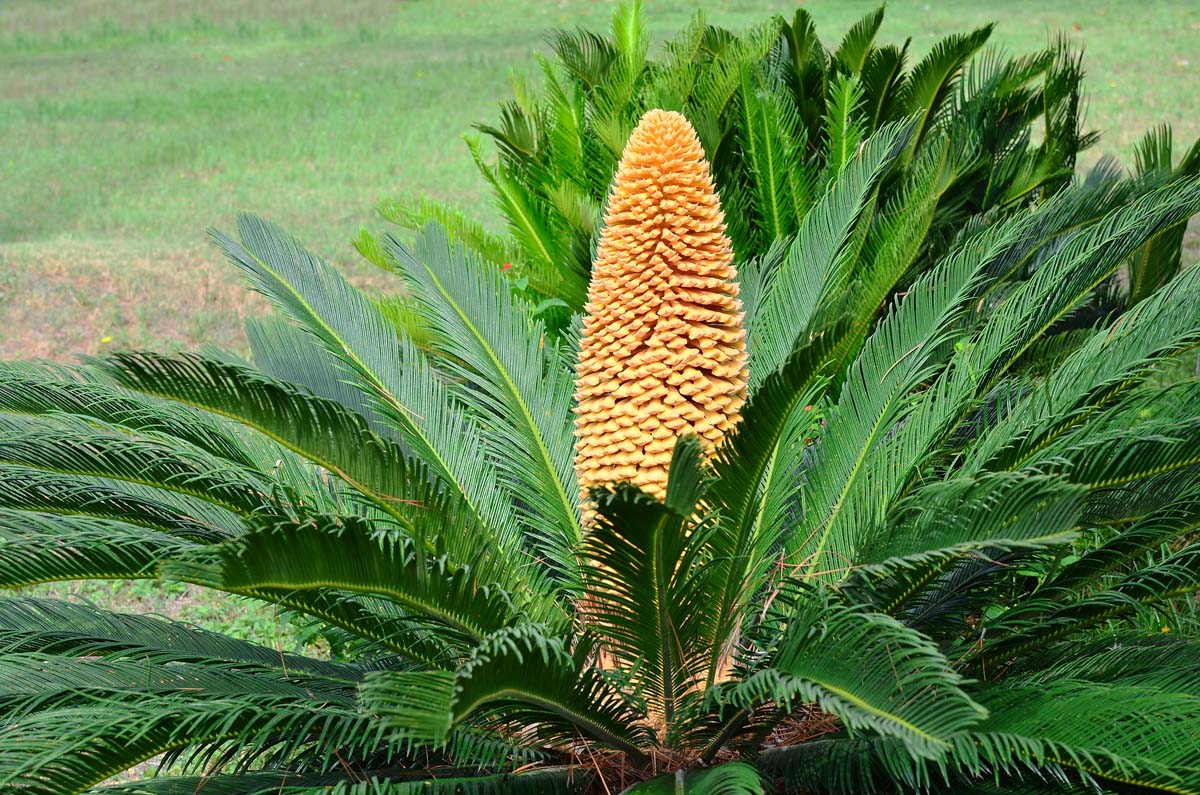Description
Cycas – Fern Palm – Sago Palm –
There are about 60 species of slow growing, woody stemmed, palms, in this genus. They occur mainly in dry, stony slopes and in semi desert and dry open woodland from Madagascar to Southern and Southeastern Asia, Australia, and the Pacific Islands. They have whorls of frond or pinnate, stiff, leathery leaves, with linear-lance shaped to sickle shaped leaflets. Dioecious inflorescences arise from the centers of the leaf rosettes. The large male inflorescences are narrow, cone like, up to 32″ tall, and usually covered in woolly hairs, the female inflorescences consist of loosely arranged, modified furry leaves, to 12″ long, bearing ovules on the edges. Male and female flowers occur on different plants. Cycas species are grown for their palm-like appearance, are also grown as a source of starch after the removal of carcinogenic alkaloids. Where not hardy, grow in a temperate or warm green house, or as a house plant. In warmer climates, they make excellent specimen plants.
Indoors, grow in a mix of equal parts loam, compost, and coarse bark with additional grit and charcoal, and a slow release fertilizer. Provide full light, with shade from hot sun, and moderate humidity. In the growing season, water moderately, reduce humidity and water in winter. Tolerant of some drought.
Prone to spider mites, mealybugs, scale insects, leaf spots, root rots, and magnesium deficiency.
C. revoluta – Japanese Sago Palm – This slow growing, long lived, single, straight, cylindrical trunk cycad, from the South Islands of Japan grows 3-10′ feet tall and 3-6′ feet wide. It is erect at first but gradually reclining with age, and suckering and branching when mature. Stiff, arching fronds, 30-60″ long, are pinnate, with up to 125 sickle shaped, glossy, dark green, spine tipped leaflets. Ovoid, woolly, golden brown inflorescences are produced on mature plants but seldom of those grown in containers. The male inflorescences, to 16″ long, are pineapple-scented, females, 8″ long, produce ovoid yellow fruit, to 1 ½” long.
Zones 9-15




